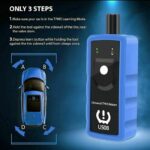Disconnecting your car battery in a 2009 Subaru Outback can lead to a frustrating reset of your radio presets, clock, and even crucial engine management system settings. Many modern vehicles rely on constant power to retain this learned data within their control modules, optimizing performance and convenience features. When this power is interrupted, these settings are lost, potentially leading to temporary rough idling or requiring you to reprogram your favorite radio stations.
While some vehicles offer a constantly powered accessory outlet to circumvent this issue by allowing a temporary 12V power supply during battery changes, the 2009 Subaru Outback, unfortunately, does not. Subaru outlets are not continuously powered, necessitating an alternative power source to maintain these vital settings.
The On-Board Diagnostics II (OBD2) connector, specifically pin 16, presents a viable solution. This pin is designed to be always hot, providing a direct connection to the car’s electrical system, even when the battery is disconnected. This constant power supply makes the OBD2 port a potential point for connecting an external 12V source to preserve your Outback’s memory settings during battery replacement or disconnection.
Many automotive service centers utilize specialized adapters that connect a 12V power source, such as a portable jump starter, directly through the OBD2 connector, leveraging the always-on pin 16 and a 7.5 Amp fuse circuit. This method effectively supplies power to the essential electronic systems, preventing data loss when the main battery is disconnected.
However, it’s crucial to understand the limitations and potential risks associated with this technique. The 7.5 Amp fuse in this circuit is designed to protect the system from overload. While the minimal power draw of the control modules and memory functions is generally not an issue, activating any power-hungry accessories can easily exceed this fuse rating.
A common mistake is inadvertently opening a door, which triggers interior lights and potentially other electrical systems. These lights, along with other accessories, can draw several amps of current. If the combined current draw exceeds 7.5 Amps while the car battery is removed and power is being supplied through the OBD2 port, the fuse will blow—precisely as designed to protect the electrical system.
The consequence of a blown fuse in this scenario is the same as if no power backup had been used at all: the radio presets, clock, and learned settings will be lost. This is often noticed when the clock and radio are reset after a battery change, and sometimes accompanied by a period of rough idling as the engine control module (ECM) relearns its optimal parameters.
It’s plausible that a technician attempting to maintain power during a battery replacement on your 2009 Subaru Outback via the OBD2 connector might have inadvertently activated an accessory, causing the 7.5 Amp fuse to blow.
Importantly, a blown fuse in this context is unrelated to Check Engine Lights (CELs). A blown fuse will not trigger a CEL. However, it will prevent a generic OBD2 code reader from powering up and communicating with the car’s computer if the reader relies on power from the OBD2 port itself. Therefore, if you are attempting to diagnose a CEL on your 2009 Outback after a battery incident and your code reader fails to power on, checking this 7.5 Amp fuse should be a preliminary step in your troubleshooting process. Understanding the safe and correct use of the OBD2 connector for maintaining power during battery disconnection is essential for preventing data loss and ensuring a smooth battery replacement process for your 2009 Subaru Outback.
